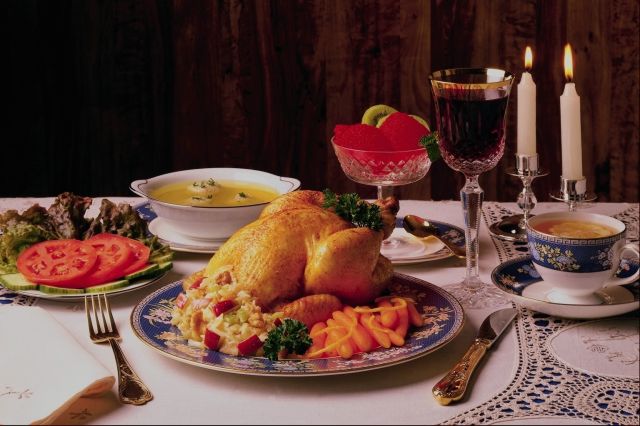Sukkot traditions and customs have both historical
and religious significance. This festival dates back to the
period during which Hebrews wandered in the wilderness on
route to Canaan (now Israel). During their pilgrimage, they lived
in temporary booths. This open living space is called a sukkah.
People also gathered in sukkot to worship and share meals. Thus,
Sukkot is also called the Feast of Tabernacle. During harvest time,
farmers lived in sukkot in open fields because it gave them
more time for harvesting. During Succoth, farmers take this time to
thank God for the crops.

On each of the seven days of Sukkot, the Torah requires
the Jew to take Four Species of plants and to grasp and shake
them in a specific manner. These species are:
the lulav (date palmfrond), hadass (bough of a myrtle tree),
aravah (willow branch)— these three are actually
and collectively referred to as the lulav—and the
etrog (a citron, a lemon-like citrus fruit).

The word Sukkot is the plural of the Hebrew word sukkah,
meaning booth or hut. During this holiday,
Jews are instructed to build a temporary structure
in which to eat their meals, entertain guests, relax, and even sleep.
The sukkah is reminiscent of the type of huts in which the
ancient Israelites dwelt during their 40 years of wandering
in the desert after the Exodus from Egypt, and is intended to
reflect God's benevolence in providing for all the Jews' needs
in the desert.

Ancient Sukkah
Kids who love camping outdoors, have a lot of fun. The sukkah
has at least three sides and a partially open roof covered with
greenery such as olive branches. Three sides of the sukkah are
covered with blue and gold fabric. Part of the fun of sukkot is
decorating the sukkah with fruits, flowers and, in the United States,
autumn vegetables like corn and squash.
During Sukkot, a special ceremony is held each day to
thank God for the harvest.
Sukkot (Hebrew: סוכות or סֻכּוֹת, sukkōt ; "booths",
also known as Succoth, Sukkos, Feast of Booths or
Feast of Tabernacles
























No comments:
Post a Comment